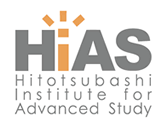A Leverage Theory of Tying in Two-Sided Markets
Abstract:
Motivated by the recent antitrust investigations concerning Google, we develop a leverage theory of tying in two-sided markets. In a setting where the “one monopoly profit result” holds otherwise, we uncover a new channel through which tying allows a monopolistic firm in one market to credibly leverage its monopoly power to another competing market if the latter is two-sided. In the presence of the non-negative price constraint, tying provides a mechanism to circumvent the constraint in the tied
product market without inviting an aggressive response by the rival firm. We identify conditions under which tying in two-sided market is profitable and explore its welfare implications. In addition, we show that our model can be applied more widely to any markets in which sales to consumers in one market can generate additional revenues that cannot be competed away due to non-negative price constraints.
| Report No.: | HIAS-E-37 |
|---|---|
| Author(s): | Jay Pil Choi(a), (b) Doh-Shin Jeon(c) |
| Affiliation: | (a) Department of Economics, Michigan State University (b) Hitotsubashi Institute for Advanced Study, Hitotsubashi University (c) Toulouse School of Economics, University of Toulouse Capitole (IDEI) and CEPR |
| Issued Date: | November 2016 |
| Keywords: | Tying, Leverage of monopoly power, Two-sided markets, Zero pricing, Non-negative pricing constraint |
| JEL: | D4, L1, L5 |
| Links: | PDF, HERMES-IR, RePEc |











